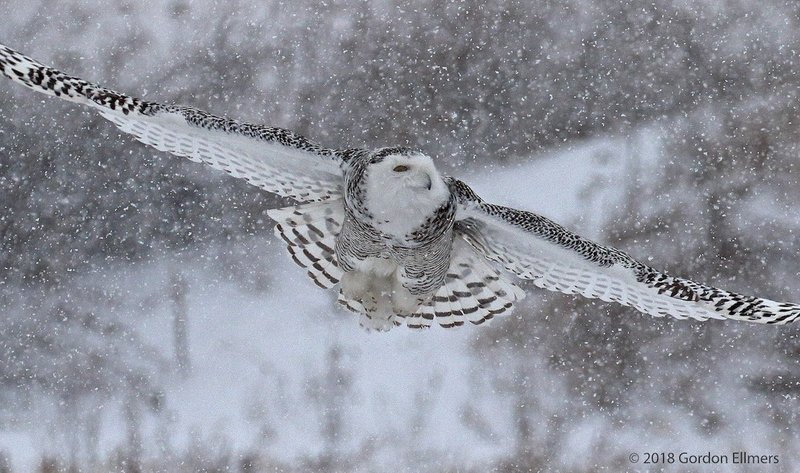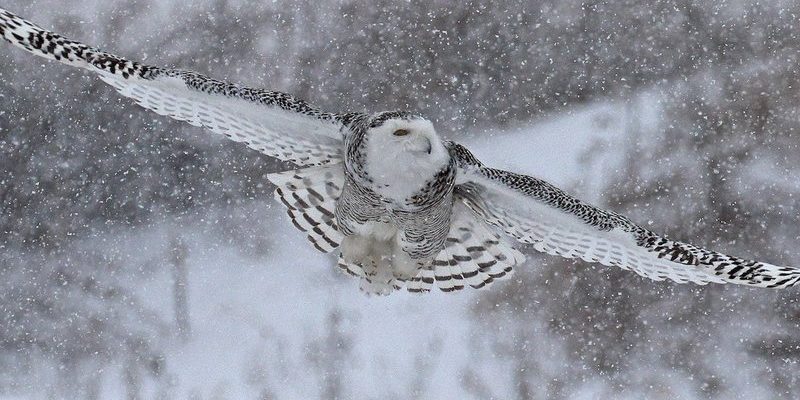
These incredible creatures are not just remarkable for their beauty but also for their unique behaviors and habitats. Think of them as the ghosts of the north—silent, powerful, and elusive. Once you know what to look for, spotting one feels like finding a hidden treasure. So, grab a warm drink, settle in, and let’s explore how to identify a Snowy Owl in the wild.
Recognizing the Snowy Owl’s Appearance
When it comes to identifying a Snowy Owl, their appearance is one of the first things that stands out. These birds are known for their striking white plumage, which can sometimes show speckles or markings, especially in older owls. The females tend to have more prominent dark spots compared to the males, which are generally whiter. Remember, seeing one in the wild is like witnessing a work of art.
Additionally, their large, rounded heads and yellow eyes are hard to miss. Imagine the wide eyes of a cat—there’s something captivating about their gaze that draws you in. The Snowy Owl’s beak is short and hooked, perfectly designed for hunting small mammals like lemmings. When you spot one, take a moment to appreciate their unique physical traits.
Also, their wingspan is impressive, reaching up to 5 feet. If you see a white bird soaring overhead, it just might be a Snowy Owl. The combination of their size and distinctive look makes them a standout in the bird world, even at a distance.
Understanding Their Habitat
Snowy Owls are typically found in open areas, often in tundra, coastal regions, and even fields. They prefer wide expanses where they can easily spot their prey. Think of them as the ultimate outdoor enthusiasts, favoring places where they can blend in yet keep an eye on everything happening around them.
During the winter months, they might migrate southward from their Arctic breeding grounds in search of food. So if you’re in a northern state or a colder region, your chances of spotting one increase significantly from late fall through early spring. Keep an eye out in areas with low vegetation and nearby perches, like fence posts or boulders—these spots are perfect for owls looking to hunt.
Their affinity for open spaces means that they often avoid dense forests. If you’re trekking through the woods and don’t see a snowy figure, don’t be discouraged. Instead, head to the nearby fields or coastlines, where the chances of encountering a Snowy Owl are much higher.
Behavioral Traits to Observe
One of the exciting parts of owl watching is understanding their behavior. Snowy Owls tend to be quite territorial, especially during breeding season. If you spot one, take a moment to watch how it interacts with its environment. You might see a Snowy Owl hunting—hovering silently before launching down to catch its next meal.
They often hunt during the day, unlike many other owls that are nocturnal. This daytime activity can be a delightful surprise for birdwatchers. Picture a serene winter day, and suddenly, you spot an owl gliding effortlessly through the air. That’s a moment you won’t forget!
Snowy Owls are also known for their unique calls—think of a series of soft, low hoots. If you hear these sounds, it could be a clue that you’re near one of these magnificent birds. Listening for their calls adds another level to the identification process, enhancing your experience in the wild.
Using Binoculars for Better Viewing
If you’re serious about spotting a Snowy Owl, a good pair of binoculars is essential. When you’re out in the field, having the right equipment can make a world of difference. A decent pair will help you catch the details of their feathers and perhaps even their hunting antics from a respectful distance.
Look for binoculars that are lightweight and easy to handle. A magnification of 8x to 10x will give you a solid view without making everything shaky. You want to feel like you’re right there in the action, but without disturbing the owl or its habitat. Plus, remember to practice using your binoculars ahead of time—when the moment comes to spot a Snowy Owl, everything will happen quickly.
Another tip: take your time. Settle into a spot and allow your eyes to adjust to the surroundings. Sometimes, the best views come when you’re patient and quiet.
Best Times to Spot Snowy Owls
Timing your adventure can make all the difference when trying to spot a Snowy Owl. While these birds can sometimes be spotted all year round, winter is typically the best season. Think about it: with the snowy backdrop, their white feathers are easier to spot against the pristine landscape.
The early morning and late afternoon are prime times for owl watching. These hours are when they are most active, hunting or simply perched in their territory. If you’re planning a trip to see these remarkable birds, start your day with a warm hat and a thermos of coffee, and head out just before sunrise.
And don’t forget that patience is your ally. Sometimes, staying quiet and still for a longer period can reward you with an unexpected sighting. Imagine standing in the crisp air, feeling the quiet anticipation build as you scan the area.
Respecting Their Space
As exciting as it is to spot a Snowy Owl, it’s essential to remember that you’re a guest in their home. Respecting their space is crucial—not just for the owls, but for the ecosystem as a whole. Getting too close can stress these magnificent birds, which can affect their hunting and breeding habits.
Always maintain a safe distance when observing wildlife. A good rule of thumb is to stay at least 200 yards away. Use binoculars or a camera with zoom to get a good view without intruding on their space. Think of it as a way to enjoy their beauty while also allowing them to live their lives undisturbed.
If you’re with others, share this knowledge to ensure everyone understands the importance of keeping a respectful distance. By doing so, you’re not only protecting the Snowy Owls but also contributing to a deeper appreciation for all wildlife.
Spotting a Snowy Owl in the wild can be one of the most rewarding experiences for any nature enthusiast. With their stunning appearance, fascinating behaviors, and unique habitats, these birds are truly a wonder to behold. By following some simple tips on how to spot and identify them, you can enhance your outdoor adventures tremendously.
Remember that timing, patience, and respect for their space are key to a successful owl-watching experience. So, take a moment to appreciate the beauty around you. Whether you’re captivated by their majestic flight or their silent watch from a perch, the magic of Snowy Owls is well worth the effort. Happy birdwatching!

